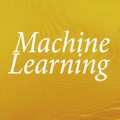人工智能类 | 国际会议/SCI期刊专刊信息9条
人工智能
TAAI 2018
Conference on Technologies and Applications of Artificial Intelligence
全文截稿: 2018-08-20
开会时间: 2018-11-30
会议难度: ★★
CCF分类: 无
会议地点: Taichung, Taiwan, China
网址:http://taai2018.asia.edu.tw/
The 2018 Conference on Technologies and Applications of Artificial Intelligence (TAAI 2018), technically co-sponsored by IEEE CIS with proceedings acquisition, is the 23rd annual conference sponsored by the Taiwanese Association for Artificial Intelligence (TAAI) and one of the most important annual academic meetings on Artificial Intelligence in Taiwan. The conference will be held in Asia University, Taichung, Taiwan on Nov.30-Dec.2, 2018.
The conference is open to international participants. The number of international participants from various countries increases constantly in the past few years. The purpose of the TAAI conference is to bring together researchers, engineers and practitioners to present and exchange ideas, results, and experiences in AI technologies and applications. High quality research papers are solicited and will be published in post-conference proceedings in IEEE Xplore digital library.
人工智能
AMLTA 2019
International Conference on Advanced Machine Learning Technologies and Applications
全文截稿: 2018-09-30
开会时间: 2019-03-28
会议难度: ★★★
CCF分类: 无
会议地点: Cairo, Egypt
网址:http://egyptscience.net/AMLTA19/
We welcome your participation and contribution to the 4th International Conference on Advanced Machine Learning Technologies and Applications AMLTA2019 which will be held in Cairo, Egypt during March 28-30, 2019. The 4th edition of AMLTA will organized by the Scientific Research Group in Egypt (SRGE). AMLTA is organized to provide an international forum that brings together those who are actively involved in the areas of interest and to report on up-to-the-minute innovations and developments, to summarize the state-of-the-art, and to exchange ideas and advances in all aspects of ML, technologies and applications. All accepted papers will be published in the conference proceeding which will be published by Springer in the series of “Advances in Intelligent Systems and Computing” and abstracted/indexed in DBLP, Google Scholar, EI-Compendex, Mathematical Reviews, SCImago, Scopus (Approved).
人工智能
Cognitive Systems Research
Special Issue on Cognitive Wireless Networks Inspired Paradigm in IoT Applications
全文截稿: 2018-10-01
影响因子: 1.425
CCF分类: 无
中科院JCR分区:
• 大类 : 工程技术 - 4区
• 小类 : 计算机:人工智能 - 4区
• 小类 : 神经科学 - 4区
网址: http://www.journals.elsevier.com/cognitive-systems-research/
The cognitive wireless communication devices are increasing immensely and it has been predicted that by twenty-twenty (2020) the worldwide traffic of these communication smart devices will increase exponentially. In this scenarios Internet of things(IoTs) will be dominated by massive wireless devices like smart sensor and Smartphone and smart wearable devices. This requires technologies to handle this massive data traffic with high mobility. The huge amount of data generated by these devices needs efficient handling and security for diverse applications. Cloud computing plays an important role in this service. Though cloud-based framework provides a significant advantage still lack huge maintenance and security challenges. This shows that the future communication systems and cognitive wireless networks have to evolve those technologies which satisfy high traffic value, more than 100 billion connected devices, a large diversity of applications supporting reliability, latency and data rates. The main challenges of huge devices and their deployment relies on smart cognitive wireless network management. Various approaches have been implemented like deep learning, reinforcement learning, and smart cognitive wireless resource management which are the current trends of communication of big data. Hence there is a need for a decentralized approach of the cognitive wireless networks to solve these problems.
This special issue invites original research that investigates the cognitive wireless network and its applications for IoT. Potential topics include but not limited to the following:
- Interfaces, protocols and associated Cognitive Wireless Network Technology in IoT
- Fast and complexity-awareness algorithms for real-time computing for Cognitive Networks
- Scientific computing and data management in Cognitive Wireless Networks
- Cognitive Network-based big data management and analytics for IoT applications
- Data-driven service management automation
- Cognitive Sensor Network issues in mobile cloud computing
- Ambient intelligence and intelligent service systems in IoT
- Spatial data techniques and tools for analytics
- Cognitive Wireless Networks for Smart city services and applications
- Internet of Things for cross-thematic applications
- Cognitive IoT applications: mobility, energy, public administration & governance, economy, health, security and environment
人工智能
AISTATS 2019
International Conference on Artificial Intelligence and Statistics
全文截稿: 2018-10-04
开会时间: 2019-04-16
会议难度: ★★★
CCF分类: C类
会议地点: Naha, Okinawa, Japan
网址:https://www.aistats.org/
The 22nd International Conference on Artificial Intelligence and Statistics (AISTATS 2019) will be held in Naha, Okinawa, Japan from Tuesday, 16 April 2019 to Thursday, 18 April 2019 at the LOISIR Hotel Naha (3-2-1 Nishi, Naha-shi, Okinawa, 900-0036, Japan).
Since its inception in 1985, AISTATS has been an interdisciplinary gathering of researchers at the intersection of artificial intelligence, machine learning, statistics, and related areas.
人工智能
eLmL 2019
International Conference on Mobile, Hybrid, and On-line Learning
全文截稿: 2018-10-13
开会时间: 2019-02-24
会议难度: ★★
CCF分类: 无
会议地点: Athens, Greece
网址:http://iaria.org/conferences2019/eLmL19.html
eLmL 2019 conference tracks:
-Trends in eLmL 3.0&4.0 systems
-Adaptive eLearning
-(Augmented) Virtual reality and social games
-Learning-oriented devices and networks
-Learning-oriented technologies
-Tools and platforms
-On-line learning
-Mobile learning, teaching, and training
-Hybrid learning
-Challenging technical aspects
-eLearning materials
-Assessing eLmL
-Education in developing regions
人工智能
Pattern Recognition
Domain Adaptation for Visual Understanding - Special Issue in Pattern Recognition
全文截稿: 2018-10-31
影响因子: 3.962
CCF分类: B类
中科院JCR分区:
• 大类 : 工程技术 - 2区
• 小类 : 计算机:人工智能 - 2区
• 小类 : 工程:电子与电气 - 2区
网址: http://www.journals.elsevier.com/pattern-recognition/
Visual understanding is a fundamental cognitive ability in humans which is essential for identifying objects/people and interacting in social space. This cognitive skill makes interaction with the environment extremely effortless and provides an evolutionary advantage to humans as a species. In our daily routines, we, humans, not only learn and apply knowledge for visual recognition, we also have intrinsic abilities of transferring knowledge between related visual tasks, i.e., if the new visual task is closely related to the previous learning, we can quickly transfer this knowledge to perform the new visual task. In developing machine learning based automated visual recognition algorithms, it is desired to utilize these capabilities to make the algorithms adaptable. Generally traditional algorithms, given some prior knowledge in a related visual recognition task, do not adapt to a new task and have to learn the new task from the beginning. These algorithms do not consider that the two visual tasks may be related and the knowledge gained in one may be used to learn the new task efficiently in lesser time. Domain adaptation for visual understanding is the area of research, which attempts to mimic this human behavior by transferring the knowledge learned in one or more source domains and use it for learning the related visual processing task in target domain. Recent advances in domain adaptation, particularly in co-training, transfer learning, and online learning have benefited the computer vision research significantly. For example, learning from high-resolution source domain images and transferring the knowledge to learning low-resolution target domain information has helped in building improved cross-resolution face recognition algorithms. This special issue will focus on the recent advances on domain adaptation for visual recognition. Topics of interest include but are not limited to:
- Novel algorithms for visual recognition using co-training, transfer learning, Online (incremental/decremental) learning, covariate shift, heterogeneous domain adaptation, dataset bias
- Domain adaptation in visual representation learning using deep learning, shared representation learning, multimodal learning, evolutionary computation-based domain adaptation algorithms
- Applications in computer vision such as object recognition, biometrics, hyper-spectral, surveillance, road transportation, and autonomous driving
人工智能
ICB 2019
International Joint Conference on Biometrics
全文截稿: 2018-12-15
开会时间: 2019-06-04
会议难度: ★★★
CCF分类: C类
会议地点: Crete, Greece
网址:http://www.icb2019.org/
The 12th IAPR International Conference on Biometrics (ICB 2019), sponsored by IAPR (Technical Committee on Biometrics – TC4, International Association for Pattern Recognition), is the premier forum for the presentation of new advances and research results in the fields of biometrics. ICB, formed in 2006 by merging AVBPA (Audio- and Video-based Person Authentication), ICBA (International Conference on Biometric Authentication) and other biometric workshops, has established itself as a leading international conference in biometrics. The conference will have a broad scope and invites papers that advance biometric technologies, sensor design, feature extraction and matching algorithms, analysis of security and privacy, and evaluation of social impact of biometrics technology. Topics of interest include all areas of current Biometrics research and applications.
人工智能
Cognitive Systems Research
Special Issue on Recent Advances in Deep Learning for Neuroimaging
全文截稿: 2018-12-31
影响因子: 1.425
CCF分类: 无
中科院JCR分区:
• 大类 : 工程技术 - 4区
• 小类 : 计算机:人工智能 - 4区
• 小类 : 神经科学 - 4区
网址: http://www.journals.elsevier.com/cognitive-systems-research/
Regional brain actions and inter regional associations are altered from one mental state to another or from healthy to unhealthy status. This variation might be manifested through neuroimaging signals that are measured from the brain such as electroencephalogram (EEG) has great temporal resolution which explores the transient alterations in brain. However, it is still challenging to extract intrinsic characteristics from these diverse signals because they give more information related to brain structure. In general, automated techniques are applied in the analysis of neuroimaging data including magnetic resonance imaging (MRI) and functional MRI (fMRI). Recently, developments in machine learning methods are combined with computational power of deep learning methods that is proved to be more efficient to solve problems in the analysis of neuroimaging data.The advancements in deep (artificial) neural network models lead towards the robust feature learning methods to attack difficult problems in neuroimaging segmentation and classification. Many impressive outcomes are achieved in the computerized deep learning (DL) methods using imaging databases. DL models commonly need annotations of many images for using supervised learning methods and are one of the roadblocks in using these models in several classification tasks in fMRI/MRI. Unsupervised methods with DL are applied successfully on the classification of natural images. These methods are also used to solve the challenging problems in brain imaging analysis. Domain transfer convolutional neural networks (CNN) are used with end to end DL method and provide better results. An extreme learning machine (ELM) is a type of DL also utilized for neuroimaging analysis. Many automated pipelines with DL methods are applied on nonmedical data for training due to lack of availability of more labeled data. More advancement in the analysis of natural images with DL techniques are applied in NeuroImage and challenges in acquiring the annotations/labels/datasets, adapting/improvising DL models, set up of parameters, multi modality pose generalization are also considered. Although limited results are available in existing work with DL based automated methods for the analysis of NeuroImage, however, it is still believed that the future is brighter in solving hard problems in the analysis of NeuroImage.
Submissions of new research ideas are encouraged in this special issue related to below mentioned topics, but not limited to:
- Analysis of Neuroimaging data based on deep learning architecture
- Differences in representation of normal brain tissues and unhealthy tissues through deep convolutional networks (CNN)
- Brain lesion detection using deep CNN models with exploration of feature learning
- Decoding mental stateusing deep CNNarchitecture
- Unsupervised learning with deep learning methods for brain diseases detection
- Extreme learning and Boltzmann machine for NeuroImage analysis
- Long short term memory model (LSTM) using brain diseases detection
- Supervised learning with deep learning methods for brain imaging analysis
- Multi transfer learning with CNN methods for the analysis of brain patterns
- Comprehensive review on brain lesion segmentation and classification
- 3D modeling of brain structure using CNN architecture
- Cardiovascular disease detection using deep learning
- Novel machine learning techniques based on neuroglial brain network
- Deep learning optimizationn in neuroscience
- Review of machine learning methods to solve real life neuroscience problems
- Brain age estimation using Deep learning techniques from MRI
人工智能
Neurocomputing
Special Issue on Deep Neural Information Processing
全文截稿: 2019-02-01
影响因子: 3.241
CCF分类: C类
中科院JCR分区:
• 大类 : 工程技术 - 2区
• 小类 : 计算机:人工智能 - 3区
网址: http://www.journals.elsevier.com/neurocomputing/
With the resurgence of deep learning architectures and learning methods, neural information processing has been applied to a variety of disciplines and proved highly successful in a vast class of applications. For instance, in the pattern recognition field, deep neural networks achieved human-like performance in recognizing, labeling and sorting images, e.g., on the ImageNet benchmark. Moreover, DeepMind’s AlphaGo Zero, trained by self-play reinforcement learning, achieved superhuman performance in the game of Go. On the hardware architecture side, advanced neuromorphic processors have been designed to mimic human functions of perception, motor control and multisensory integration.
Researchers with varying backgrounds in computer and cognitive science, mathematics, physics and computational neuroscience are very active in this field, that is booming and expects to change the world. As such, this is the right time to collect and disseminate latest discoveries and results on deep neural information processing in a Special Issue of Neurocomputing. The special issue goes in this direction by soliciting original, high-quality, contributions in all aspects of deep neural information processing.
The list of possible topics includes, but is not limited to,:
- Novel deep neural network architectures;
- Deep learning theory and learning methodologies;
- Advanced supervised/unsupervised/reinforcement deep learning;
- Deep neural networks for data mining, pattern recognition and signal processing;
- Deep neural networks for intelligent control and decision-making;
- Deep neural networks for emerging applications such as smart healthcare, transportation and business intelligence;
- Graph-based deep neural information processing;
- Emerging brain-like deep neural network techniques;
- Neuromorphic engineering and hardware implementation of neural networks.
下载Call4Papers App,获取更多详细内容!


登录查看更多
相关内容
Explanation:无线网。
Publisher:Springer。
SIT: http://dblp.uni-trier.de/db/journals/winet/
A Survey of Reinforcement Learning Techniques: Strategies, Recent Development, and Future Directions
Arxiv
80+阅读 · 2020年1月19日




